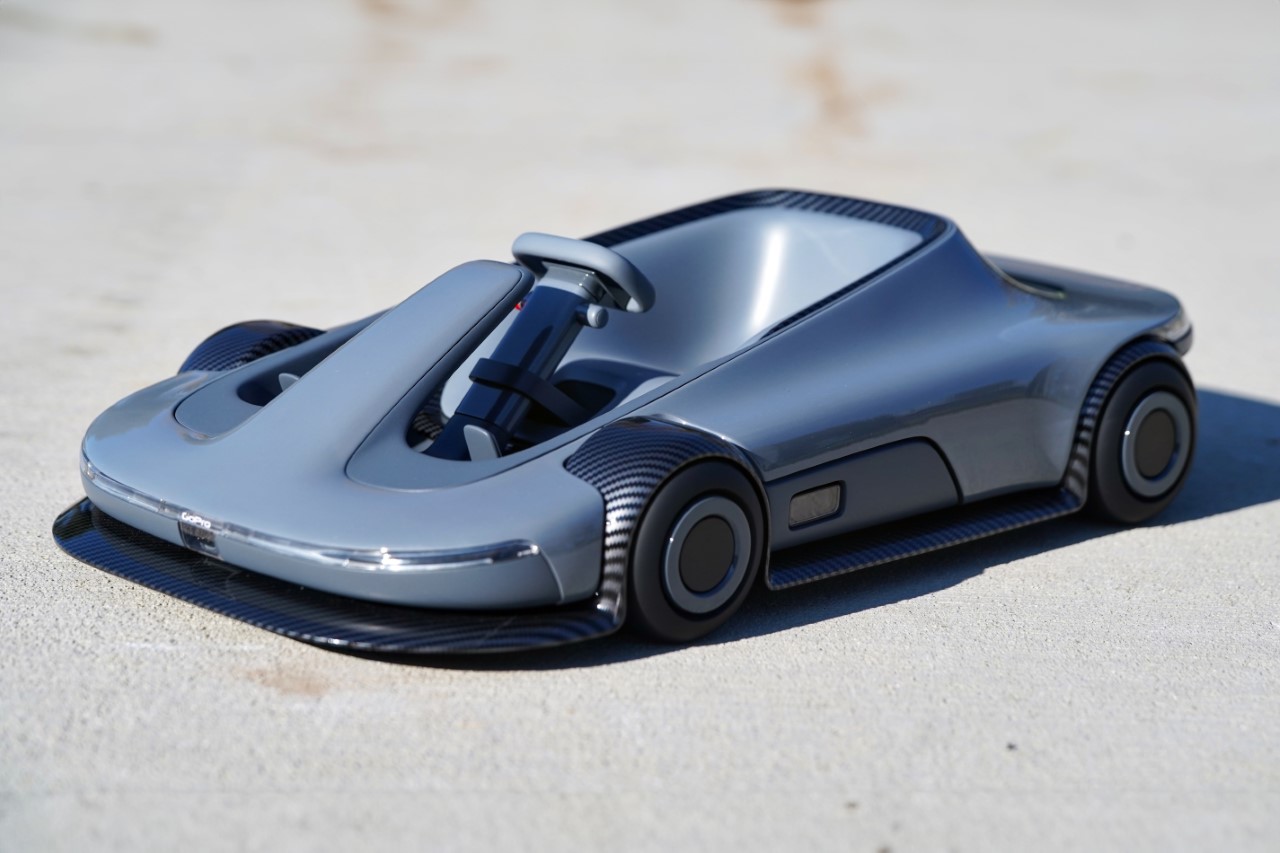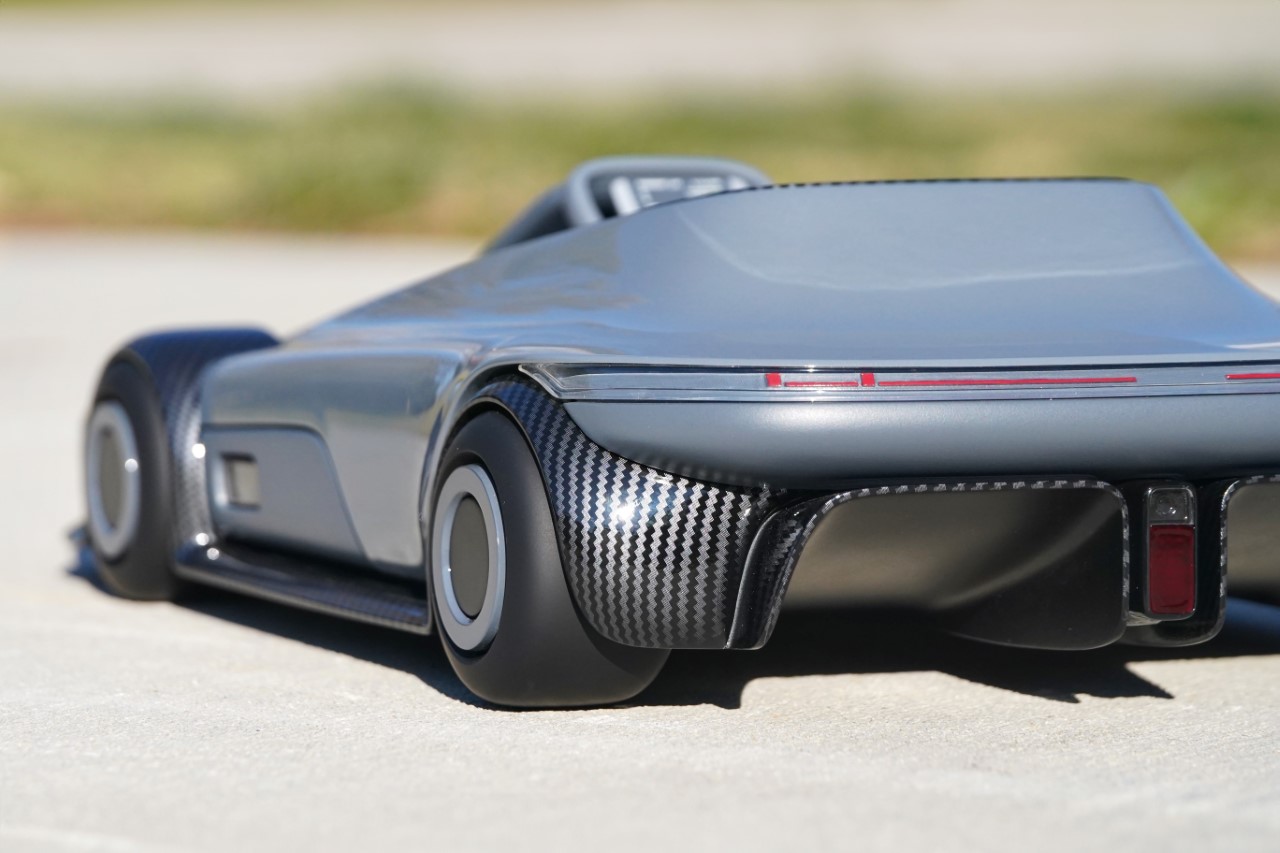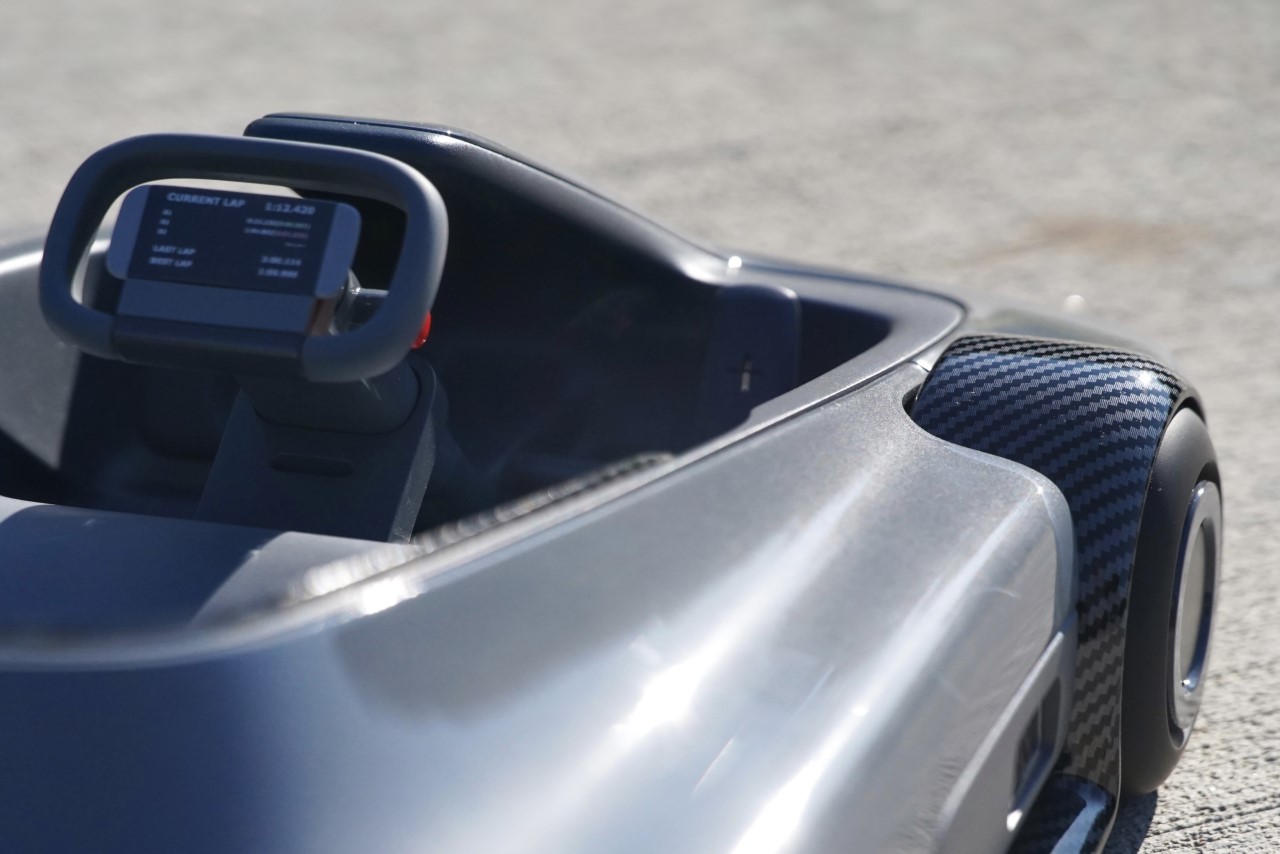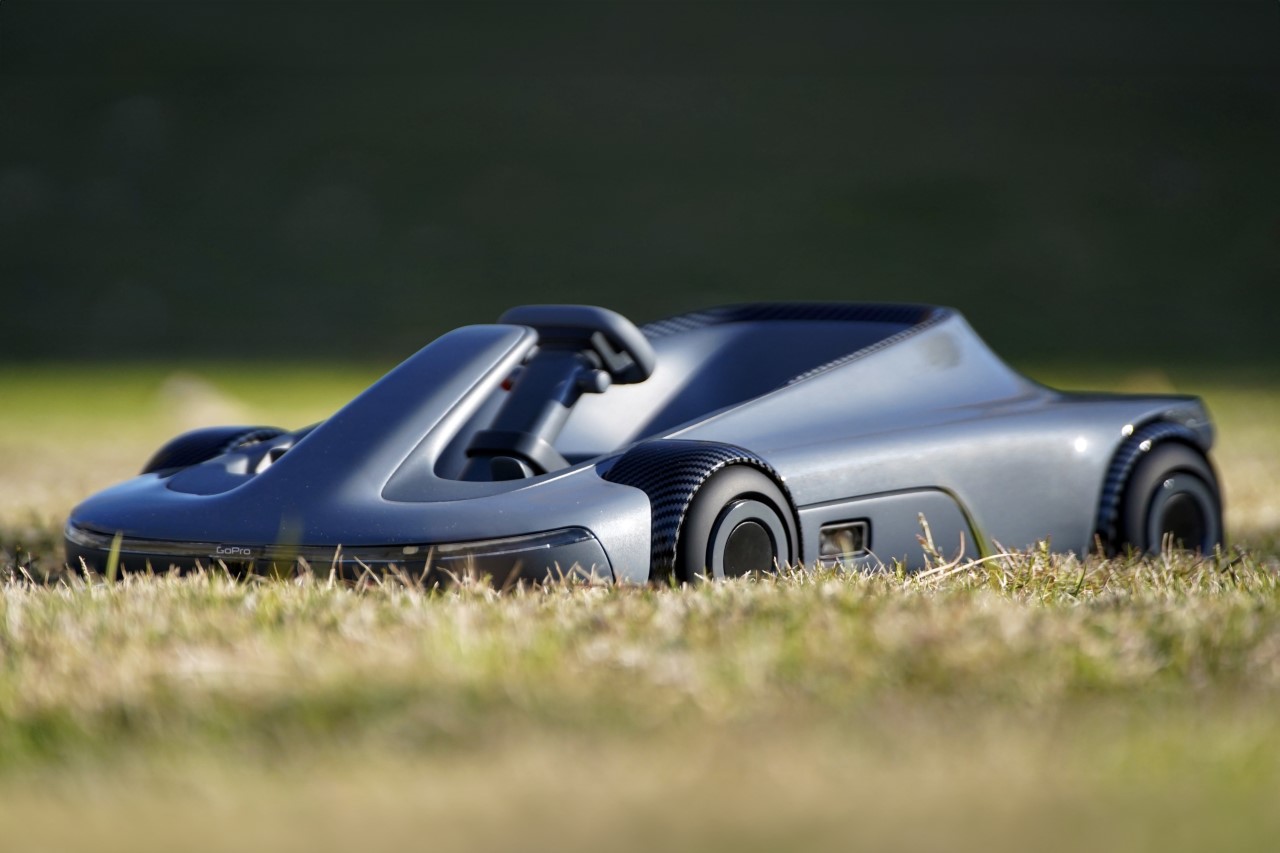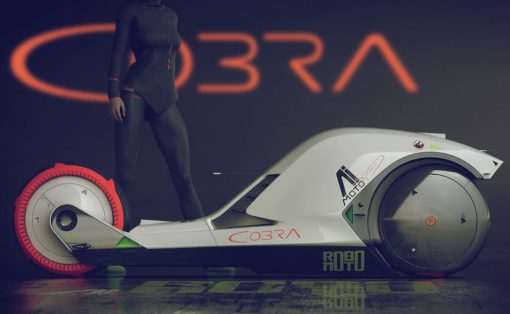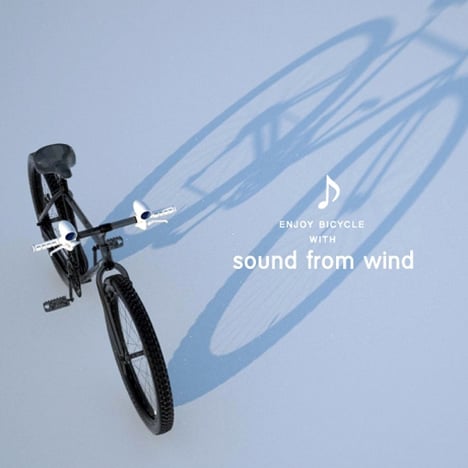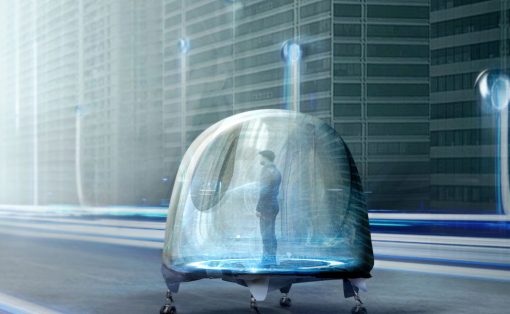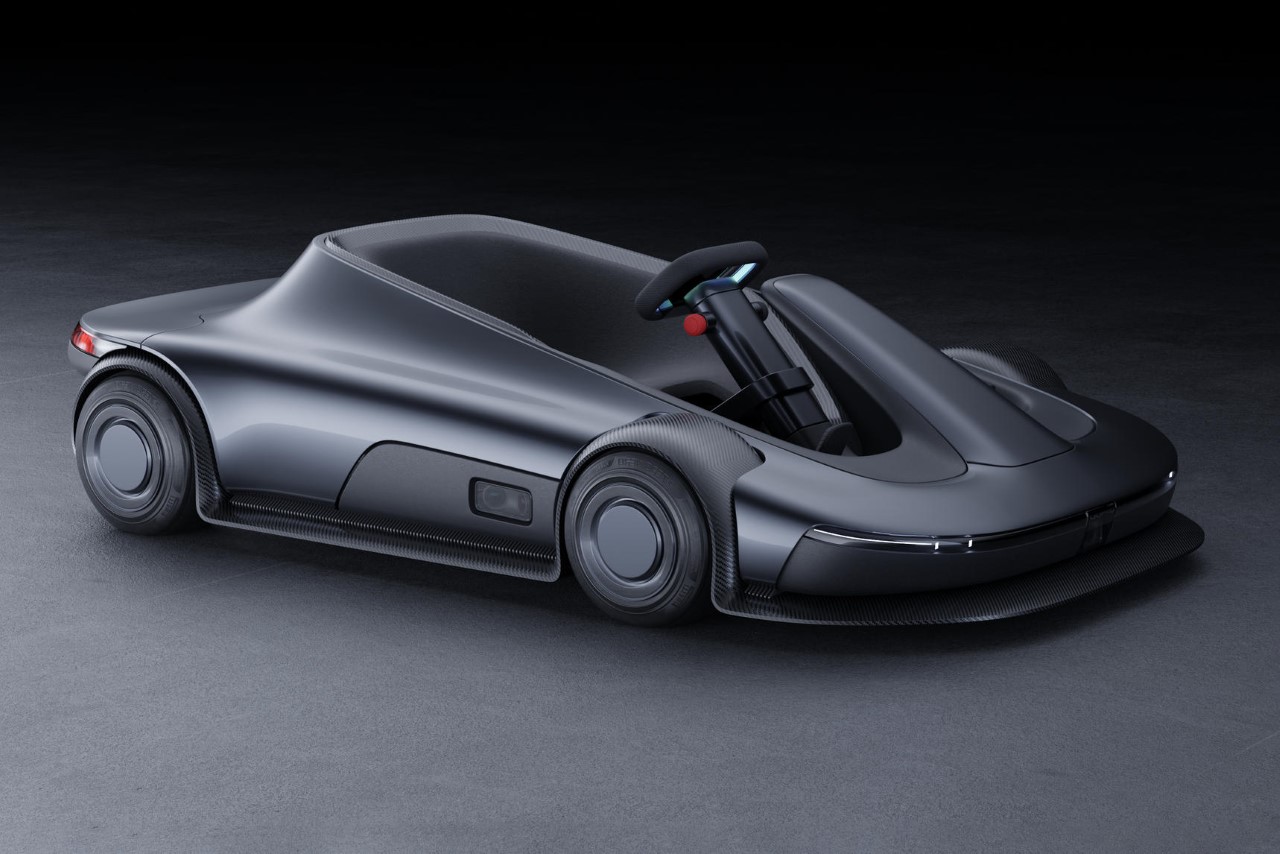
It makes absolute sense. The company that has a brand built around action and adrenaline should be in the racing business… no? After all, isn’t that exactly what Red Bull is doing? Designed by Sean Gao, the GoKart imagines a world in which GoPro goes automotive. The racing cart isn’t like anything we’ve ever seen before. It sports a gorgeously modern design with sleek surfaces that blend into each other… but the kart’s secret sauce is the fact that it has multiple action cameras integrated into its design, capturing your race from multiple PoVs. Designed for thrill but also for entertainment, the kart captures multiple streams from different angles, allowing viewers (or even the driver) to enjoy the race like never before. Easily the coolest thing to happen to karting since Mario Kart.
Designer: Sean Gao
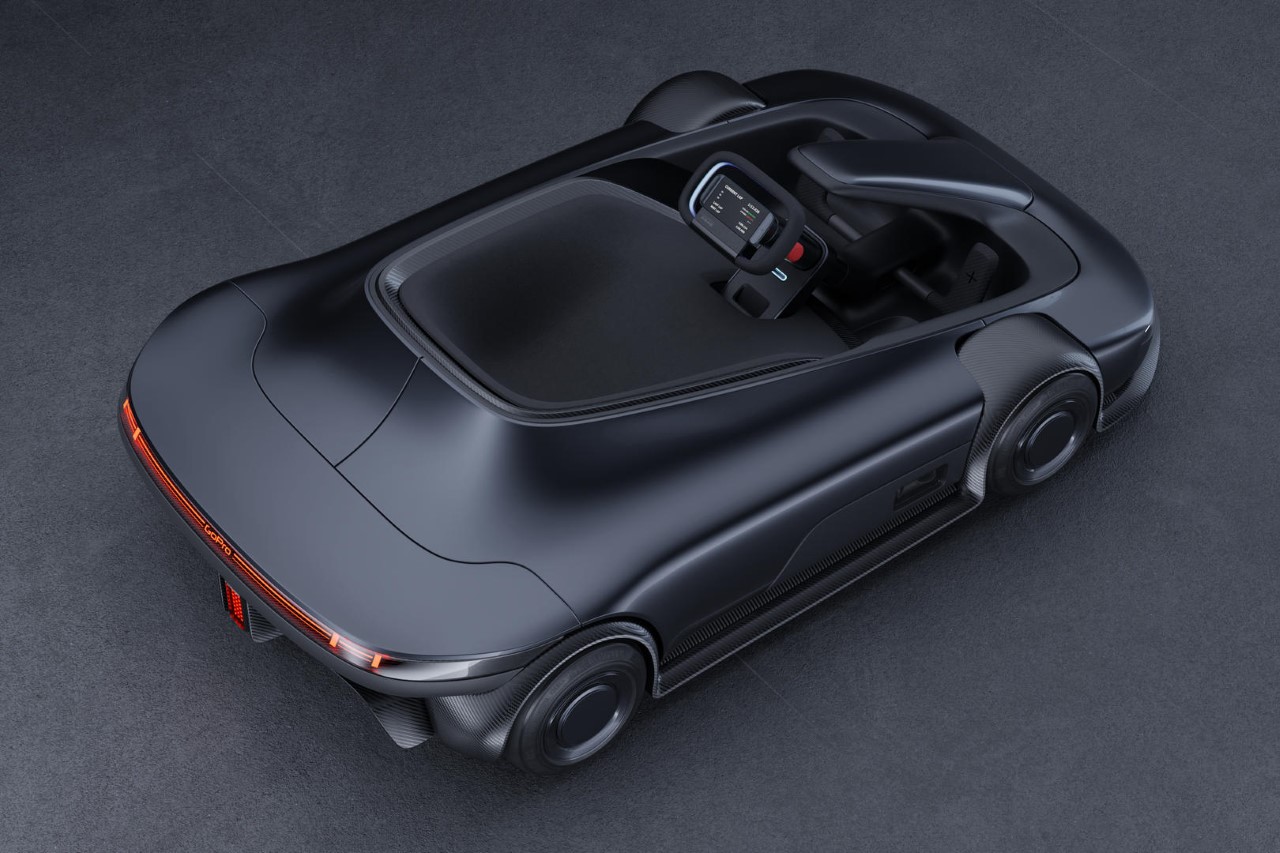
The GoPro GoKart is a modern-day racing vehicle that brings karting into the future. Sure, you could do the rounds of a track on a gasoline-guzzling hunk of metal and fiberglass… but nothing quite beats racing around in these bad-boys. The GoPro GoKart is gorgeous to look at, sporting an uber-slick design that’s just about as gorgeous as a high-end racecar. You’ve got flowing surfaces that create the kart’s beautiful silhouette, with metal and carbon-fiber paneling that reflects light with a soft matte glow that’s subtly classy. Meanwhile, the kart comes outfitted with razor-thin headlights and taillights too, so night-time won’t stop your races.
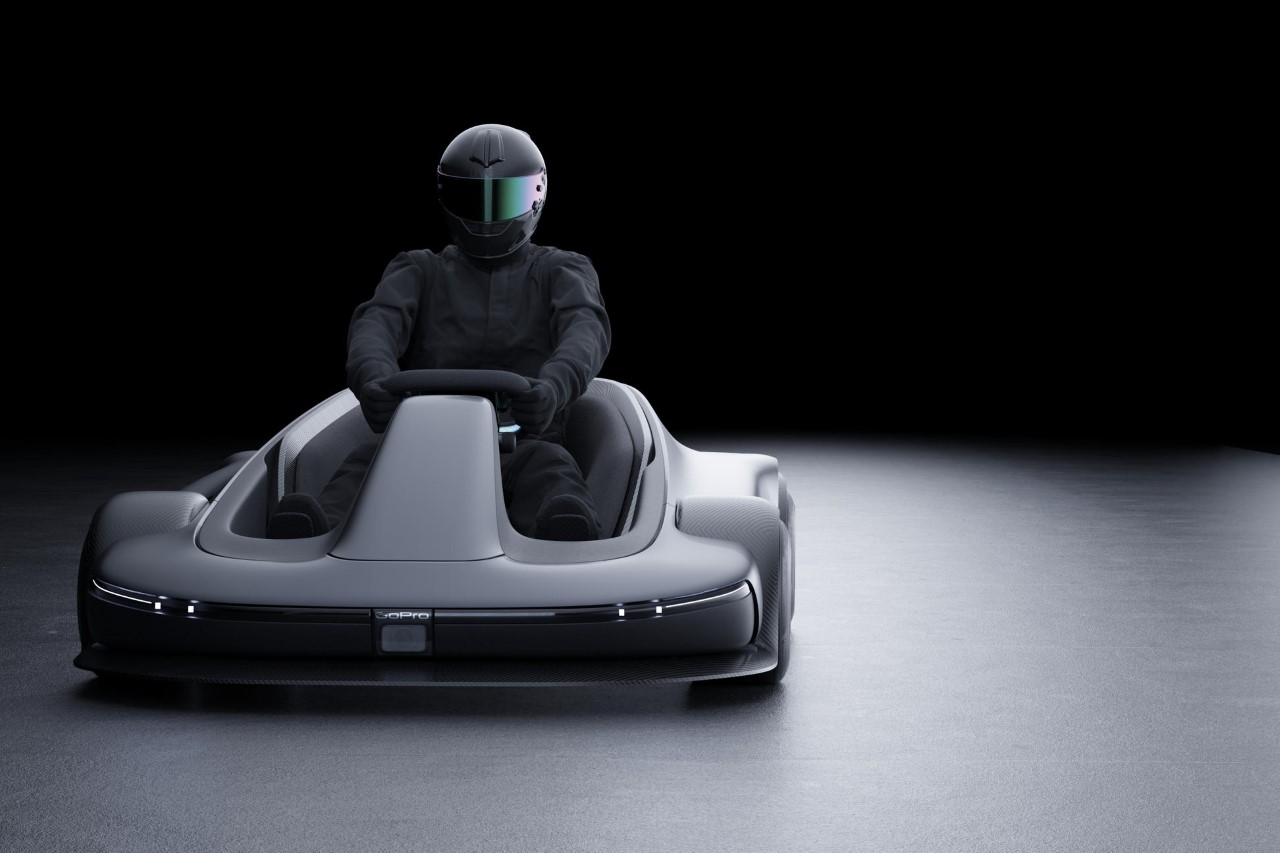
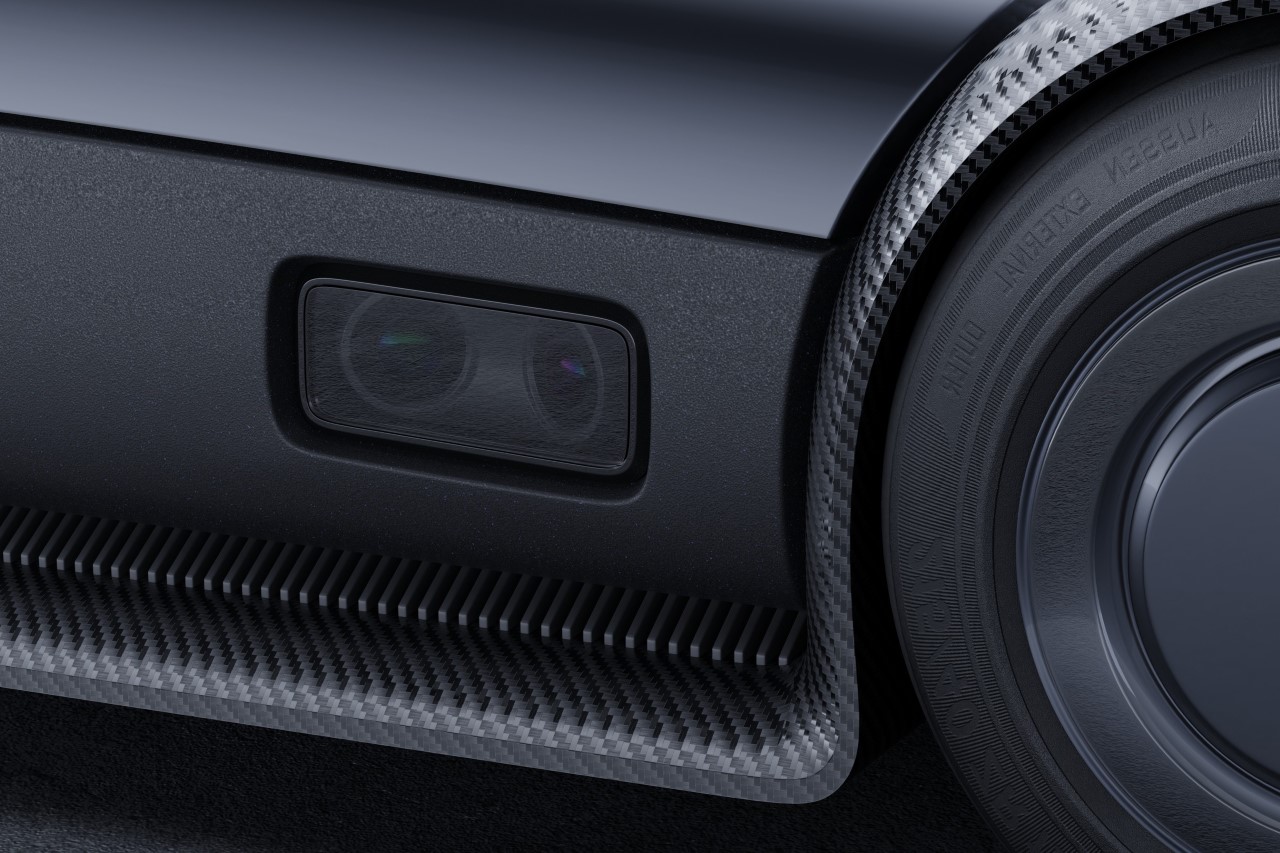
Where the GoKart functionally differs from other karts, however, is in the inclusion of multiple wide-angle action cameras a la GoPro. These cameras can be found on the front, sides, and rear of the car, capturing multiple angles during the race. The result, breathtaking moments for both riders as well as the audience to enjoy during or even after the race. Gao proposes building an entire racing track around the kart too, with a multi-level course that are studded with cameras that add to the race feed.
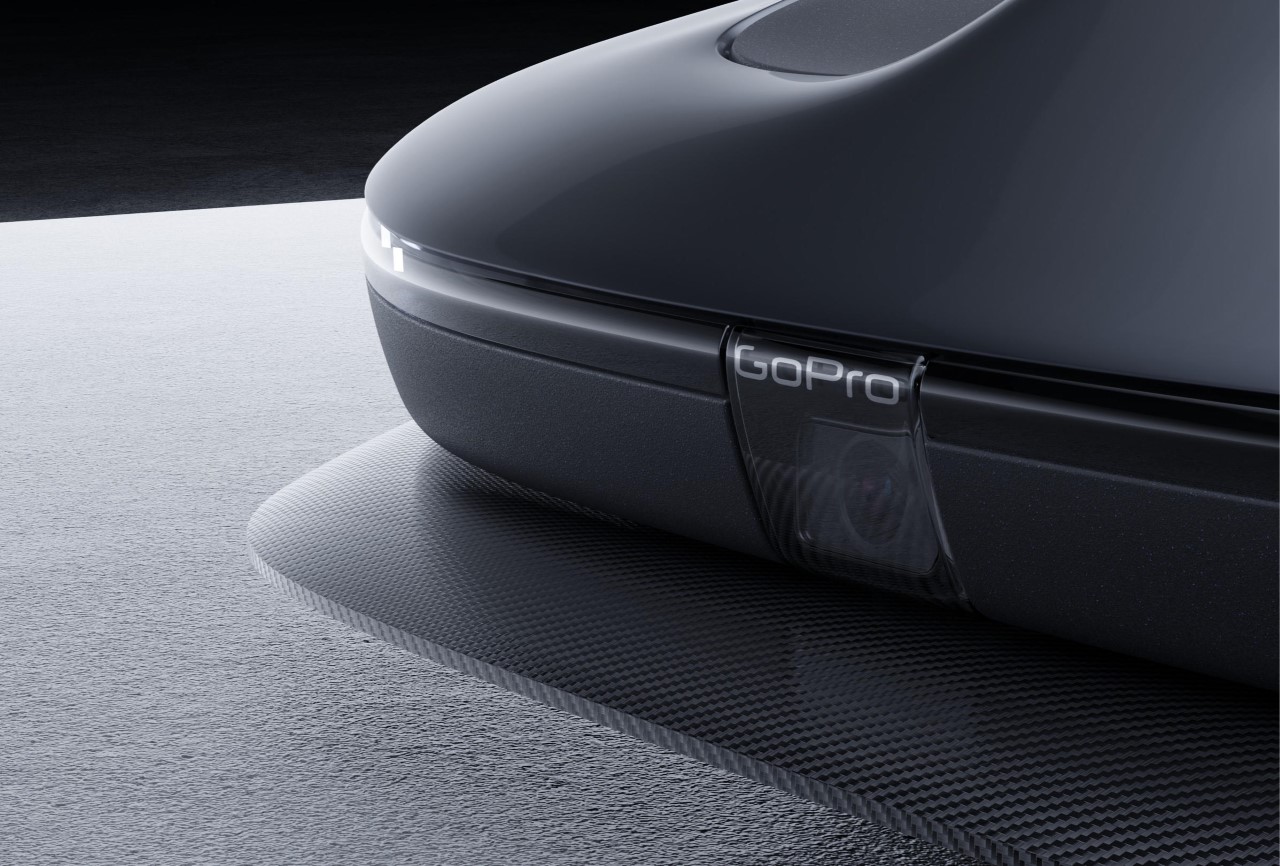
The car’s cameras help capture the action right from the driving seat. A front-facing camera documents the track ahead, while a rear camera lets you see your opponents biting the dust. Cameras on the side document a much more high-stakes experience, letting you see two cars going head-to-head side by side.
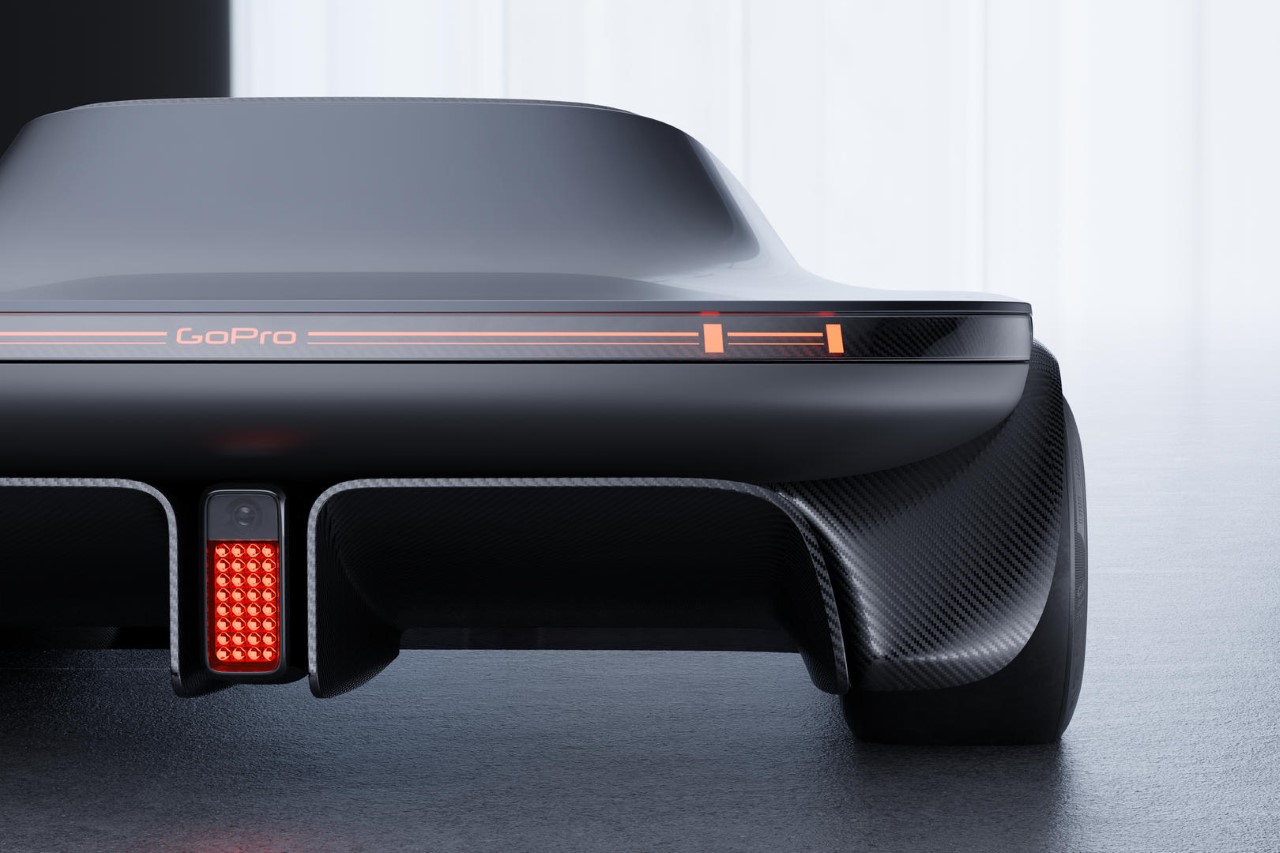
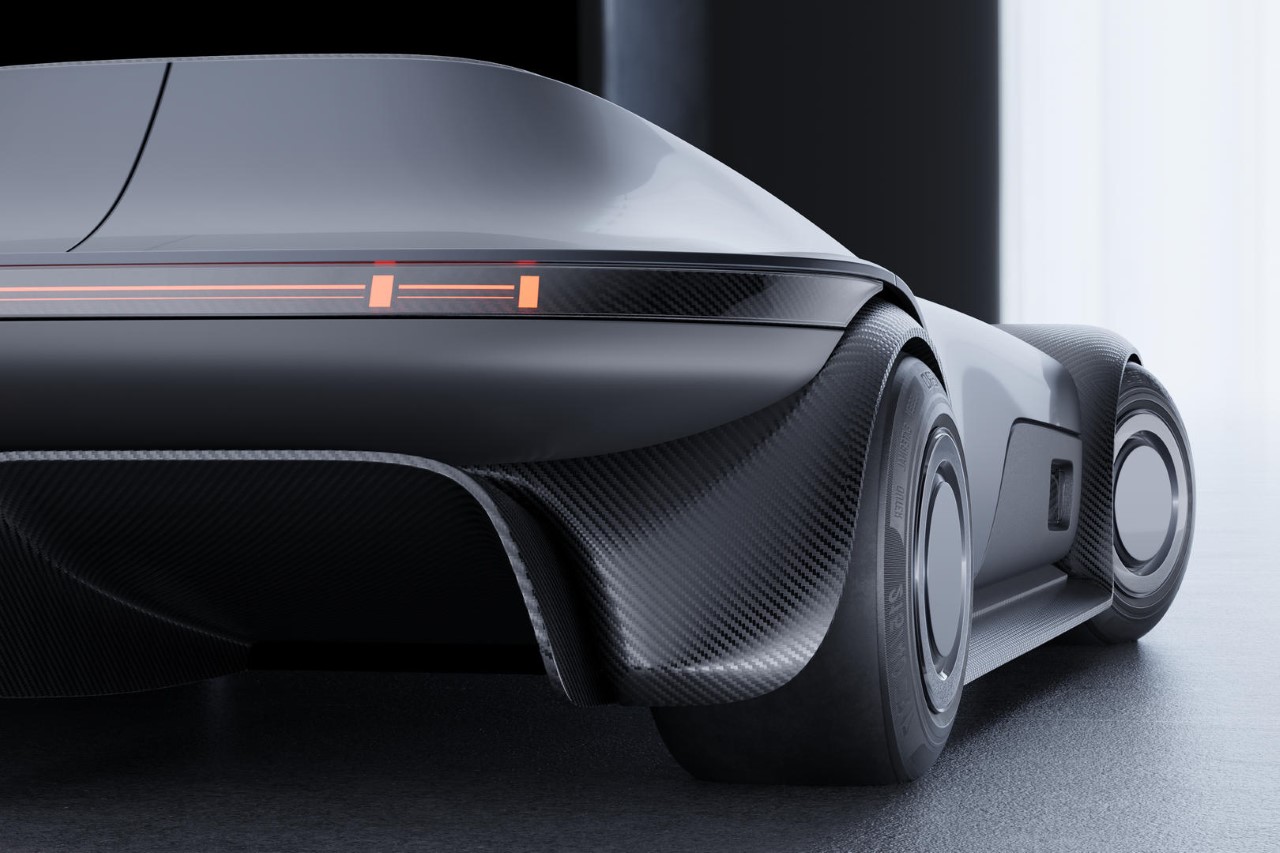
The kart seats one, but aside from just a simple cockpit with a wheel and pedals, you’ve also got a dashboard with information, controls, and settings. A space underneath the steering wheel (or yoke, rather) lets you dock your smartphone, which starts the car and lets it authenticate its driver. The yoke’s central dashboard lets you see racing stats, as well as quickly toggle camera views to see what’s happening behind you. Meanwhile, video footage also gets sent to your phone, allowing you to replay your highlights after the race and share the footage with friends and fans.
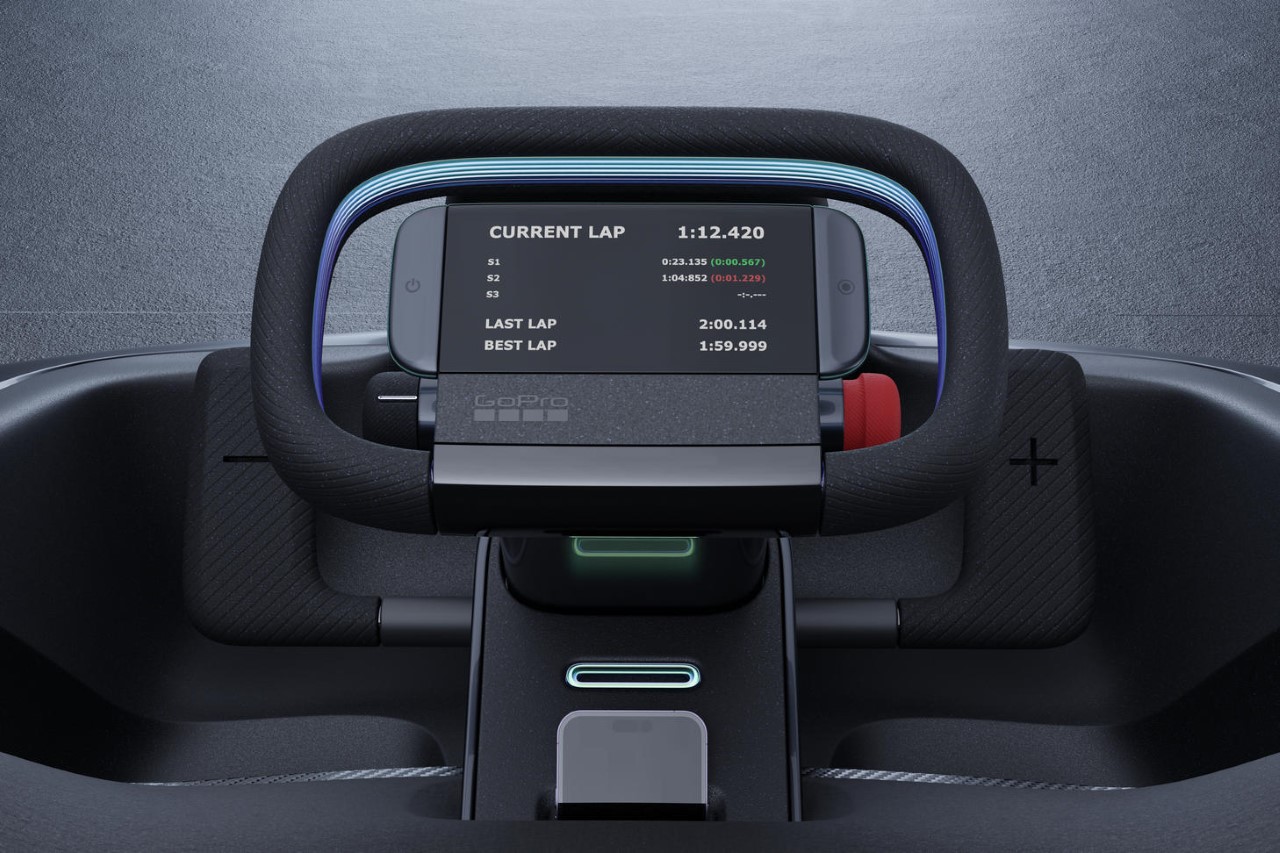
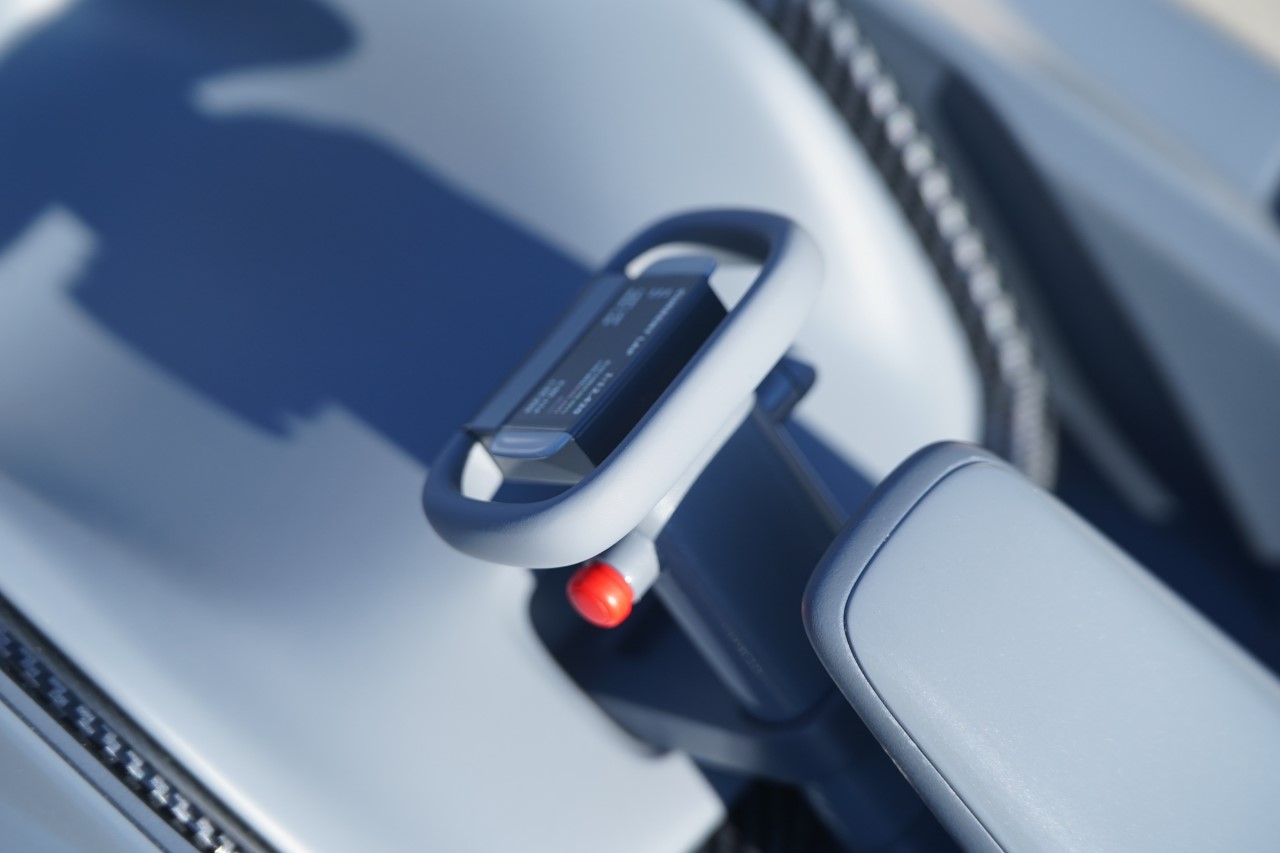
Ultimately for Gao, the GoKart is a massive branding exercise for GoPro, letting it reinforce its position as the apex action-camera company. It also creates a separate channel that exists independent of the action camera business, building a sport that can be followed by dedicated fans. This helps solidify the brand, which has seen some weakening following a few corporate scandals and the rise of other companies like Insta360 and Kandao. Moreover, the karts are pretty much billboards on wheels for GoPro’s cameras, letting people experience their brilliance in the form of high-octane kart racing. If anyone at GoPro is reading this, give Sean a call…
